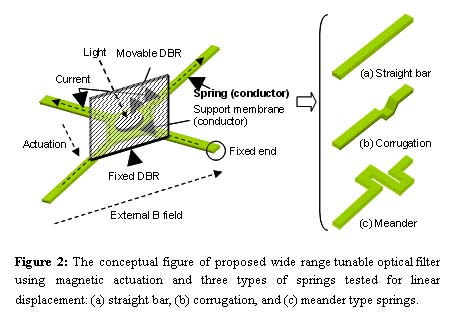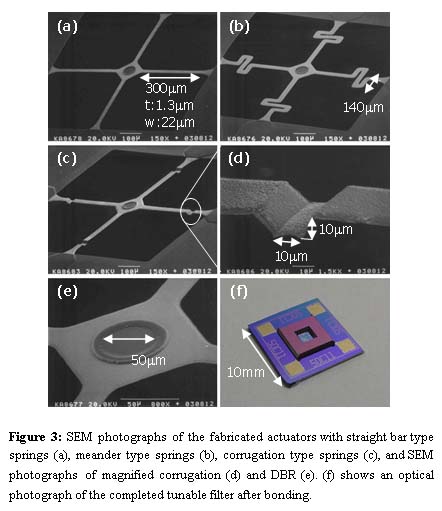
About
Recently, wavelength division multiplexing (WDM) networks have been widely deployed because of their high transmission capacity. In order to fully utilize the possible capacity given in a fiber, the number of wavelengths launched in a fiber has been continuously increased and this trend will continue in the coming years. With the invention of zero water-peak fiber like Corning¡¯s SMF-28e, the available bandwidth in a fiber for communication has reached over 400nm, eliminating the blocking region near water-peak at 1400nm in wavelength as shown in Figure 1.

It is anticipated that the utilization of available bandwidth in a fiber will be accelerated in future optical communications. Consequently, it is required to develop optical components, such as tunable filters for example, with a wide tuning range for emerging markets in high capacity WDM networks. In this work, we have proposed and demonstrated, for the first time, the application of low-voltage magnetic actuation to a tunable optical filter to achieve a wide linear tuning range.

Figure 2 illustrates the conceptual figure of the proposed tunable optical filter. We have used a bi-directional Lorentz force to actuate a filter structure; from this, a wide tuning range can be achieved with small power consumption using a strong external magnetic field. We have fabricated and tested three different types of spring structures: straight bar, corrugated, and meander types to optimize the proposed magnetic actuation for high linearity and low power consumption.

Figure 3 shows the SEM photographs of the fabricated actuator and an optical photograph of the completed tunable optical filter. With the fabricated actuator, we have achieved linear displacement of over 3um utilizing bi-directional nature of magnetic actuation. From this, we have acquired a wide linear tuning range over 200nm in wavelength, which is the widest ever reported to the best of our knowledge. The fabricated tunable filter has demonstrated a maximum static power consumption of less than 25uW for wavelength tuning up to 200nm with an external magnetic field of 0.28T. The estimated total rms noise of the fabricated filter is 19.3 picometer in the 200nm tuning range.




